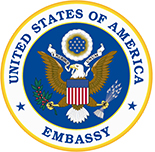Madagascar is well-known for its various endemic, yet endangered species. Thanks to its unique biodiversity that abounds in exceptional wildlife, it is not uncommon to come across a multitude of endemic species dispersed in all over the Big Island’s regions.
Apart from lemurs and other endemic reptiles, tortoises are among the living treasures that the country has to offer. Madagascar’s tortoises are seen as the most beautiful terrestrial turtles in the world. Due to their rarities, tortoises are mostly object to trafficking and poaching.
The tortoise named Astrochelys radiata, also called star turtle or radiated tortoise, “sokatra” of its Malagasy name is a terrestrial turtle that belongs to testunidae race. Madagascar is home to 13 turtle and tortoise species, including species which are among the rarest in the world. These species include Spider tortoise named Pyxis arachnoids; Flat-tailed Tortoise or Pyxis planicauda; Madagascar Big-headed Turtle or Erymnochelys madagascariensis; Radiated Tortoise or Astrochelys radiate; Ploughshare Tortoise also called Astrochelys yniphora ; Eastern Hinged-Back Tortoise or Kinixys zombensis; Hawksbill Turtle or Eretmochelys imbricata; Leatherback Sea Turtle or Dermochelys coriacea; Green Turtle or Chelonia mydas; Olive Ridley, Lepidochelys olivacea; Loggerhead Sea Turtle, also named Caretta caretta; Yellowbelly Mud Turtle, Pelusios castanoides; and Helmed Turtle or Pelomedusa subrufa.
Many of these endemic turtle species are now critically threatened with extinction due to habitat loss and illicit trade. For instance, the survival of the radiated tortoise and the Hawksbill turtle – a sumptuous marine species with yellow and brown-marbled shell – is in real danger. This sea turtle lives in tropical oceans and is present in the north of Madagascar. In contrast, the radiated tortoise or sokatra, characterized by a dark and dome-shaped carapace, is mostly observed in the south. The “sokatra”, is also perceived as a “Fady” – literally translated “taboo” –in some tribes of Madagascar. In the Mahafaly and Antandroy tribes, for instance, it is forbidden to feed on turtles and shoot them.
Turtles conservation strategies
The Turtle Survival Alliance (TSA) has been entitled the global leader in preserving Madagascar’s endemic turtles and is currently in charge of 25,000 tortoises. Through their programs “zero turtle extinctions in the 21st century” which aim to eradicate wildlife trafficking and illicit market of terrestrial turtles, the TSA committed to providing vital service and care to protect the Big Island’s endemic turtle species, especially the radiated tortoises which are at the highest risk of extinction. The Alliance also engages in teaching and raising community’s awareness on the importance of biodiversity conservation. Due to the covid-19 pandemic, the TSA was concerned with a serious problem in managing the conservation of these endemic species. In this case, the US Government, through the United States Agency for International Development (USAID) and the US Department of Interior’s International Technical Assistance Program (DOI-ITAP), agreed to support the TSA with a grant of up to USD 150,000 to care for more than 24,000 rescued tortoises until their safe return to the wild.
Note: Basically, both tortoises and turtles are reptiles of the order Testudines but each one of them belongs to a distinct family classification. The primary distinction between a tortoise and a turtle is the place where they live. Tortoises generally dwell on land while turtles live in the water for most of their lives. However, there are other characteristics which help us spot the difference between a tortoise and a turtle: physical appearance, habitat and distribution, lifespan, diet, and reproduction and birth.
Sources: ONTM / WWF Madagascar/ USAID / World Atlas



